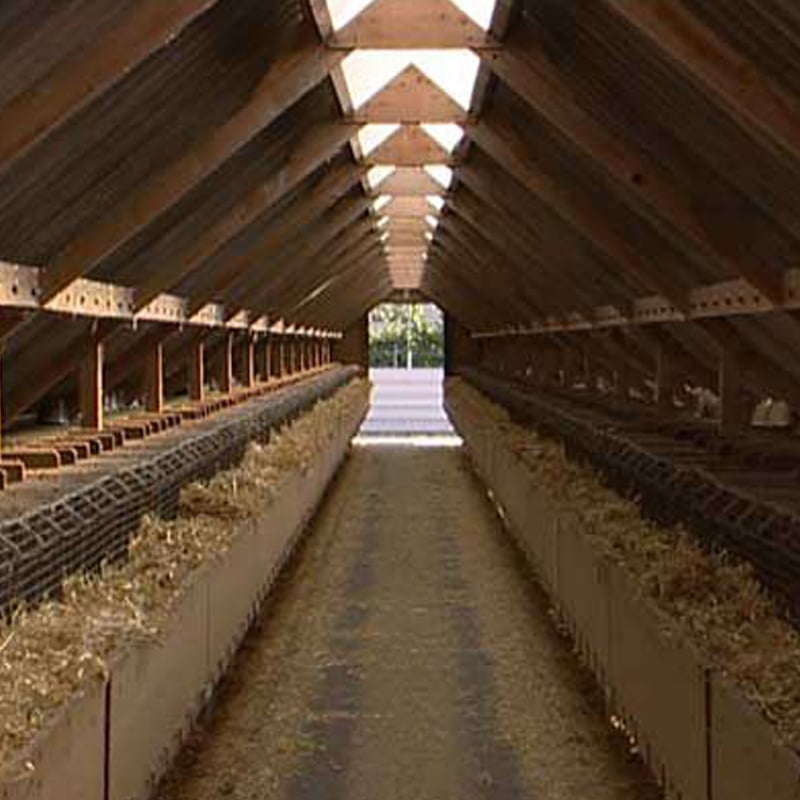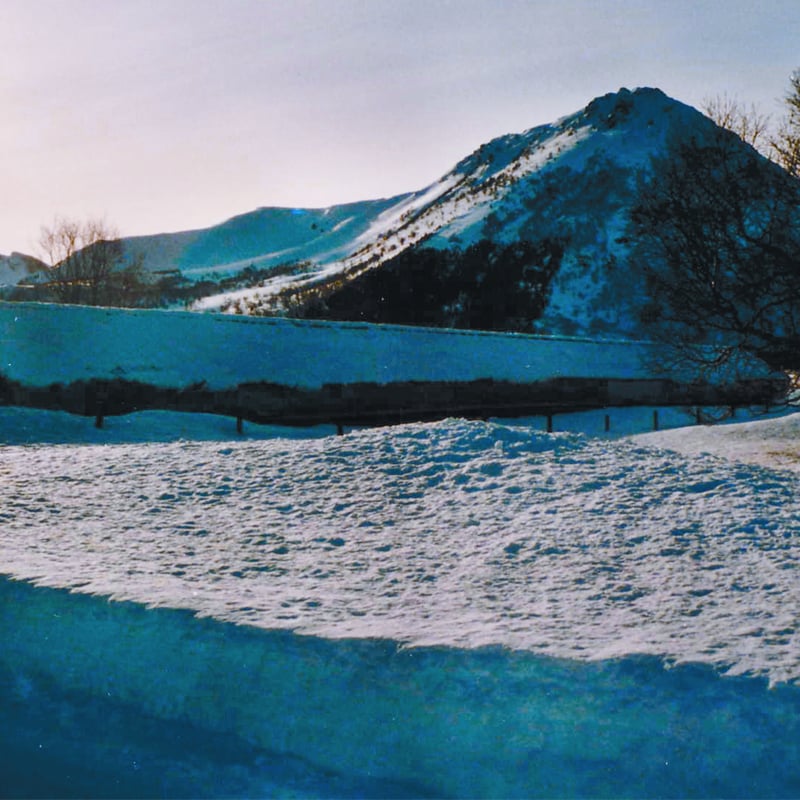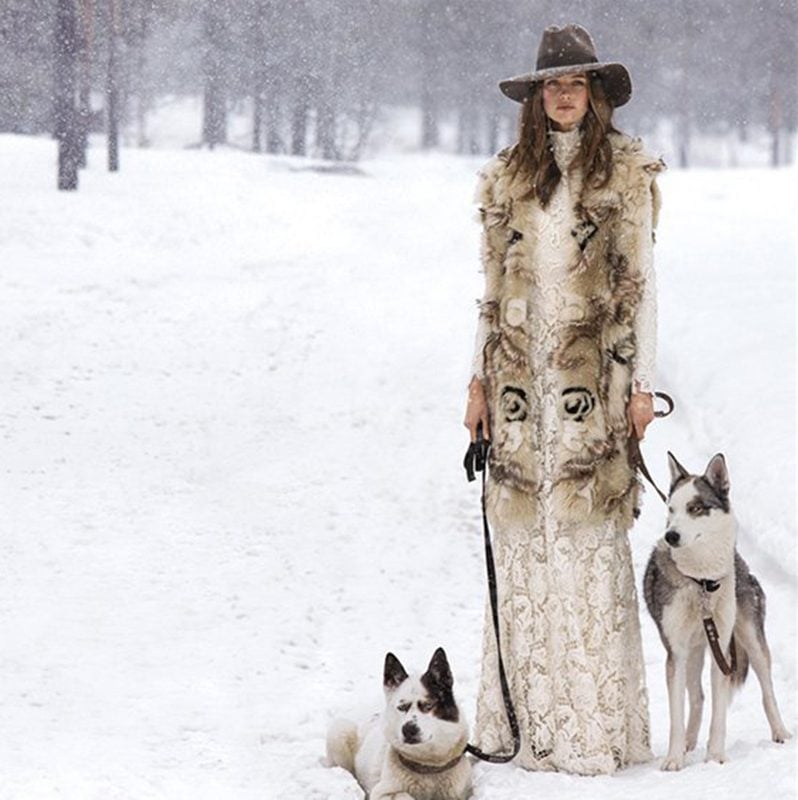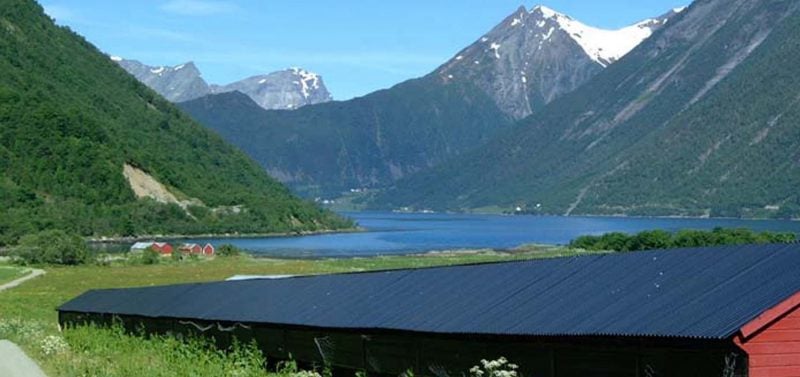Intro
Animal welfare is a top priority for the IFF and all members of the international fur industry. There is a big difference between animal welfare and animal rights. Animal welfare is the idea that animals should ideally be free from suffering and that the responsibility for this rests with human beings. Animal rights refers to the idea that animals have rights that are completely independent of humans and thus humans do not have the right to use animals as food or for clothing.
The fur sector respects animal welfare both legally when required by governmental authorities and voluntarily, often going above and beyond the minimums required. Please read more about animal welfare and animal rights.
Anti-fur groups do not want to hear this message. Many anti-fur campaigns and campaigners are not about improving welfare but simply the abolition of the fur trade on ideological grounds. Most anti-fur myths that are regularly circulated are easily debunked.
Animals on fur farms are protected against sickness and unfit living conditions. Think about it. The fur farm wants to raise quality products to sell. This would ensure caring for their animals to produce highest quality fur. There are many rules and regulations governing both farming and trapping all over the world, and you can visit the welfare section of our website for more information.
Transparency
Over the recent years, the industry has become increasingly transparent. Many European countries, such as Denmark, now operate an “open farm” policy inviting members of the public to visit farms to see for themselves the welfare standards in force. This is usually done to dispel any myths surrounding the care the animals receive, the conditions they are brought up in and how the farm in general is run. Meet with a farmer in the video below.
Animal welfare & animal rights

These two things may sound similar, but there is a big difference between them. Animal welfare means animals are well cared for and have access to clean water, nutritious food, shelter and veterinary care, to name a few. Generally, animal welfare means the farmer, or animal owner, needs to ensure the animals they tend to are cared for responsibly and in accordance with the latest available scientific knowledge and best practices. Animal rights means that animals have rights, similar to the rights conferred upon people; it means animals are completely independent of us and people therefore do not have the right to use animals in any way.
This sounds very academic and complex, but in simplest terms it means that people cannot use animals for any reason – ever. Animal welfare largely acknowledges that animal use is acceptable as long as there is no avoidable suffering and every effort is made to keep the animals comfortable and healthy.
Animal rights groups frequently campaign to end the use of meat, leather, wool, dairy products, silk, medical animal research, guide dogs, horse racing and, in many instances, pets.
Most of us would agree that we have the right to make choices that affect our own lives. No one, for instance would dream of forcing someone who is vegan to eat meat. It is their choice and should be respected.
Many animal rights activists however, cannot bring themselves to respect the rights of others to make their own choices and sometimes demand that governments “ban” the production and trade of may animal products, including fur. You can read more about this in our Freedom of Choice (link to IFF page here) section.
Freedom to choose

Freedom of choice is something that the fur sector respects very strongly. Fur is a luxury and as a result the businesses that work in this historied and highly skilled area are dependant on members of the public taking the choice to use and wear it. We value the freedoms we all share in determining our own choices in how we live our lives: who we meet, where we go and what we wear. Everyone should have the freedom to make their own decisions in this regard and we fundamentally reject calls to restrict or ban people from making their own decisions.
When opponents of fur speak in the media and online, they often call for a “ban” on fur. Whether it be trade, farming or harvesting from abundant populations you can’t read much from these opponents words before you come across a proposal to legally sanction activities to do with fur. In modern times we have some of the greatest varieties of choice in some fields, while in others things are much more restricted. This all or nothing view of the world, where when somebody sees something they don’t like they immediately call for a ban is immature, intolerant and not something in our view to be welcomed in society.
Environmental & Societal Sustainability

Something is Environmentally Sustainable when the demands placed on the environment can be met without reducing its capacity to allow all people to live well, now and in the future.
Fur farming is a modern and highly efficient process that has honed itself to be optimally sustainable using for example the waste products of other industries (e.g. eggs, cheese, fish and meat) to feed the animals that give us fur. On the other end of the production the waste products from fur including dung, animal fat etc. can be used in the manufacturing of biofuels, cement, pharmaceuticals and fertiliser making fur farming today a process that has minimal environmental impact.
Wild fur comes from carefully-managed and abundant wild furbearer populations throughout North America and Russia providing a surplus which can be harvested on an annual basis without negatively impacting the populations. Federal, State, Provincial and Territorial governments control this sustainable harvest, which is conducted by licensed trappers using regulated and certified traps during carefully regulated seasons.
When furs are preserved (known as Dressing & Dyeing), like any process using chemistry, it is highly regulated. Frequent government inspections make sure the output of the product and any emissions conform to the highest standards. The process requires salts (which are filtered out of emissions) to preserve and sawdust to clean the skins. After this, the sawdust can be reused to generate power for the mechanical processes like stretching. Fur dressers are highly skilled and are always looking to make their process more sustainable, including new efforts to certify their work with independent assessment organisations.
Societal Sustainability is harder to define. The fur industry employs approximately a million people around the world and with tens of billions of US Dollars annually of economic activity directly related to fur, the industry makes a huge contribution to tax revenues and to the incomes of rural communities. Fur businesses are most often family-owned as the skills are passed form one generation to the next. Fur also allows many indigenous communities to carry out their traditional way of life, (e.g. Inuit seal hunters) while providing for their families in some of the harshest climates on Earth.
Another aspect of this kind of sustainability is that societies make decisions about what kinds of activities/organisations are allowed and which are not based on many factors like relative cost to the society, public opinion, etc. The fur industry demonstrates well why it deserves “license to operate” however the opposition fur has faced in the past years is proof that there is still work to be done in this area particularly in public communication.
Further reviewing and improving welfare standards, making processes more efficient, producing better quality products and demonstrating Environmental and Societal Sustainability to consumers and to the public at large are key to securing the license to operate for the fur trade, well into the future.
Day in the Life of a Mink- Exposing animal rights myths
THIS day-in-the-life video shows how mink truly live – and it’s not how the animal rights brigade want you to believe.
Activists are quick to claim it is impossible for farmed fur animals to live a comfortable and healthy life.
But our round the clock video of a typical farmed mink nails the myth once and for all.
Farmers worldwide provide excellent nutrition and care for their animals.
Raised in pens, farmed mink are well cared for and have an opportunity to express natural behaviors.
In fact, the quality of their lifestyle is as good, if not better, than a lot of family pets.
In contrast with their wild cousins, farmed mink enjoy constant easy access to nutritious food and clean water. Animals are also well protected from predators and extreme weather. And have superb veterinary care.
Today, 50% of global fur production comes from Europe. A wide range of EU legislation applies to fur farming, including strict regulations on killing methods, trapping, international trade and animal welfare.
Mark Oaten, CEO of the International Fur Federation said: “There is a lot of misinformation about fur farming, so we wanted to show you what it’s really like. That’s why we placed a camera in a mink cage for 24 hours, so you can judge yourself what happens. The minks conditions are run by many rules and regulations. These are set up by scientists and vets.
“As you can see from the film, the mink have time to play and interact with each other. We believe that our farms operate to the highest standards. But take a look yourself. In many countries, we offer farm visits.”
By implementing WelFur, the most advanced animal welfare assessment programme, the European fur sector aims to create the highest standards in animal welfare and enhance the quality of the fur produced.
Fur farmers and fur sector workers dedicate their whole lives to caring for animals, they continually do research into welfare and are always trying to do things better.
Interested in visiting a fur farm?

To visit a fur farm, fill out the form and a representative from the IFF will contact you and refer you to the right place.




